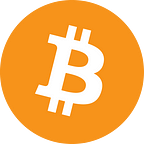How to Protect Yourself From Inflation: What Is Bitcoin?
What is Bitcoin?
Most people are familiar with Bitcoin as the virtual currency. But Bitcoin is far more than just a virtual currency. Bitcoin was conceptualized by Satoshi Nakamoto in 2008 as a peer-to-peer electronic cash system. According to the most accurate definition of Bitcoin by the Bitcoin website, Bitcoin is: “A purely peer-to-peer version of electronic cash would allow online payments to be sent directly from one party to another without going through a financial institution. The payments would be protected by the cryptography of the Bitcoin network, rather than traditional financial institutions. The Bitcoin network would consist of anyone with a computer and an Internet connection.
The world’s first deflationary currency
In Bitcoin’s genesis block, Satoshi Nakamoto, the father of Bitcoin, explained the original motivation behind the cryptocurrency in a set of statements that lay out a compelling deflationary philosophy: “The time delay between sending a Bitcoin and getting a receipt has been dramatically reduced,” wrote Nakamoto. “Because each Bitcoin has its own unique identification number, it can be used as a proof of ownership, as has been done in a limited fashion since bitcoin was launched.” “Bitcoin is to bitcoin what cash is to paper currency. The total Bitcoin monetary base is limited to 21 million bitcoins,” Nakamoto wrote in 2012. “They will be gradually issued by the entity which controls the majority of the mining equipment on the Internet.
Protecting Yourself from Inflation
This post is not intended to criticize the inflationary argument for Bitcoin or the economy as a whole. There are valid reasons to believe that inflation will increase going forward, particularly in the United States (U.S.) but it’s very difficult to forecast the rate of inflation. Gold, historically, has been the safest hedge against inflation but this is a substitution not an example. According to data from the United States Federal Reserve (U.S. Fed), the Fed Consumer Price Index (CPI) is expected to rise 3.2 percent in the year ending in December 2015 (Exhibit 1). This is slightly below the 4 percent predicted for 2016, suggesting that the Fed may be a bit behind the curve as there has been some downward pressure on CPI (Exhibit 2).
Conclusion
Inflationary monetary economics is a key macro-economic trend for economies across the globe. As asset prices have spiked since the financial crisis of 2008, and debt continues to pile on top of that, inflation is picking up. This risk is being exaggerated and there are no real solutions in sight for reversing the inflationary trend. Many central banks have kept interest rates low to stimulate the economy by keeping nominal price levels steady. This creates a challenging situation because nominal prices are rising at the same time that nominal incomes are not. It is in this situation that many are looking to Bitcoin and a number of cryptocurrencies as inflationary hedges or protection against inflation.
Supported by 1 Bitcoin Website. Where you can buy pixel advertising space for bitcoin and the proceeds will be used to plant trees.
